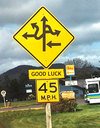B
Bentheman87
Visionary
Silver Level
If you aren't familiar with the M system from Dan Harrington, it's a number that tells you how many more rounds you can survive if you never play a hand, so it basically tells you just how much pressure you are under to make a move before you get blinded out. You take your total stack and divide it by the total starting pot to get your M. Once it is below 5 you are considered to be in the red zone. In my opinion knowing how to play correctly in the red zone is the most important tournament skill to have, because even if you are shortstacked its still very possisible to come back and get deep into a tournament. Here are a few questions what do you guys think is the correct answer?
How much do your hand requirments change when you drop from an M of 5 to an M of about 4? How much do your hand requirments change when you drop from an M of 4 to 3 (an M below 3 means almost any hand is good enough to push all in, even a king rag or a queen rag is usually good enough)? How about if the remaining players are huge stacks or very small stacks, they are less likely to fold when you make your move, so how do you hand requirments change?
How much do your hand requirments change when you drop from an M of 5 to an M of about 4? How much do your hand requirments change when you drop from an M of 4 to 3 (an M below 3 means almost any hand is good enough to push all in, even a king rag or a queen rag is usually good enough)? How about if the remaining players are huge stacks or very small stacks, they are less likely to fold when you make your move, so how do you hand requirments change?








